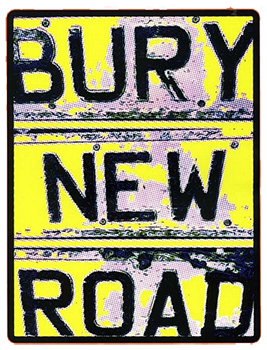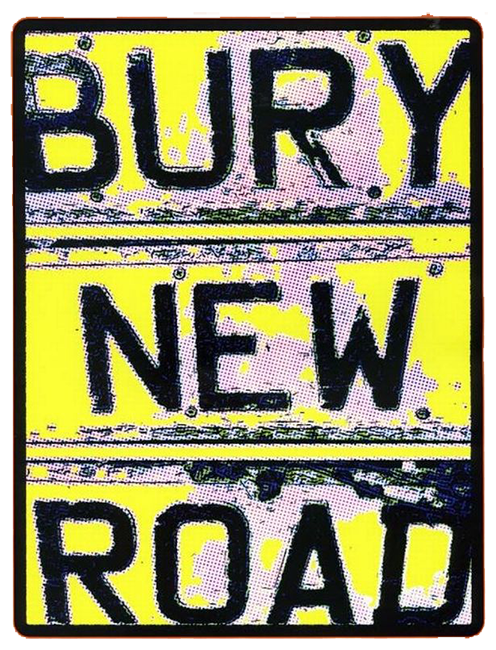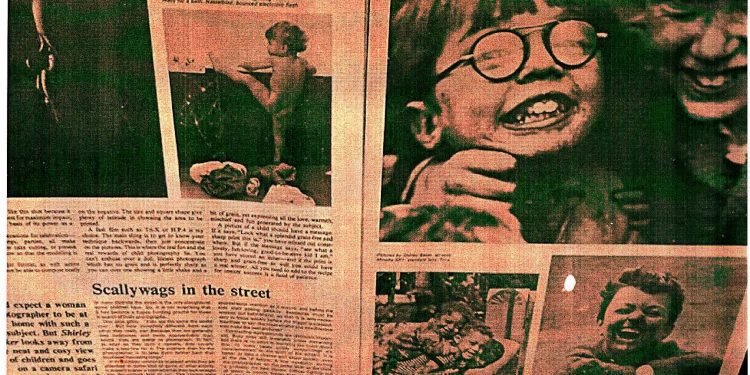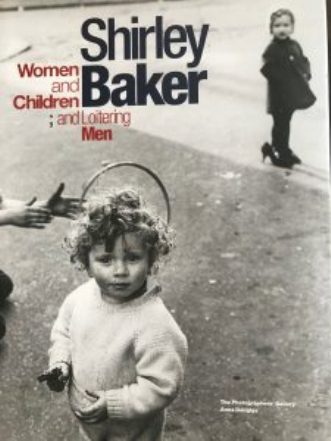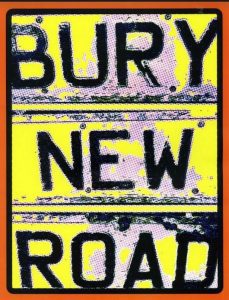An interview with Anna Douglas, who has curated five Shirley Baker exhibitions and has had access to Shirley Baker’s personal archive…
“I was researching an exhibition in 2012, in Nottingham, about post war photography and was trying to find a woman photographer” Anna recalled at the Manchester Art Gallery show Women and Children; And Loitering Men in 2017, when 280,000 people visited the record breaking exhibition.
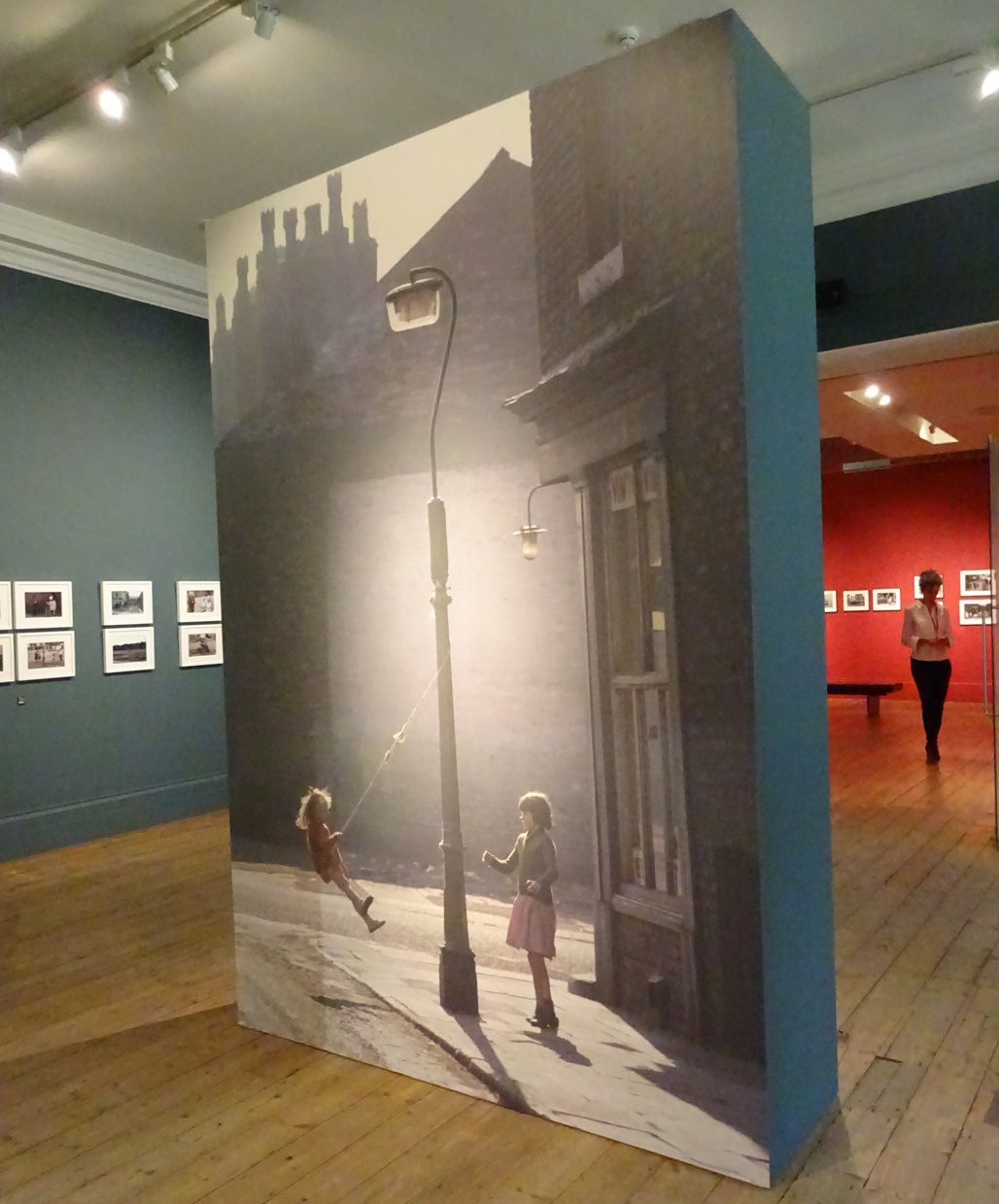
“There were one or two photographers but I found Shirley Baker. I went to see her and couldn’t believe how much work she’d got – and that she’d never had a solo show in London. I promised her that I’d get her an exhibition that would be national or international, and eventually in 2014 the Photographers Gallery in London came back” Anna recalled “And what was a great shame is that she died before she ever saw the show. The book we produced sold out in two editions, and when the exhibition opened in 2015, 54,000 people came to see it.”
Before this time, Shirley Baker had been building up a reputation that included work at The Tate, London, Le Louvre, Paris, San Paulo, Brazil and twinning with LS Lowry for the opening of the Lowry Centre, Salford, in 2000.
All this stemming from the present of a box brownie camera that Shirley’s uncle had given her and her sister when they were eight years old and living in Prestwich, having moved from Kersal in Salford, just down Bury New Road. It began a lifelong passion. She was head of Stand Grammar School’s photographic society, and, at 18 took a City and Guilds in Pure Photography at Manchester Municipal College of Technology.
From there, Shirley got jobs photographing industrial equipment and processes at CEG, Courtaulds and, later AVRO (British Aerospace), before going to London for a one year course in medical photography. On returning to Manchester, Shirley got published in the magazine, Photography, including a spread on Manchester show dogs and their owners, and worked freelance for The Guardian, although, as a woman, she believed, she couldn’t get a union card to get on the staff…
In 1960 Shirley got a part-time teaching job at Department of Graphic Design at Salford School of Art, and In 1961 began photographing what was called ‘slum clearance’ in Ordsall and areas near the college; a passion that would entice her to return to the areas for twenty years on and off, in what one magazine called a ‘camera safari’.
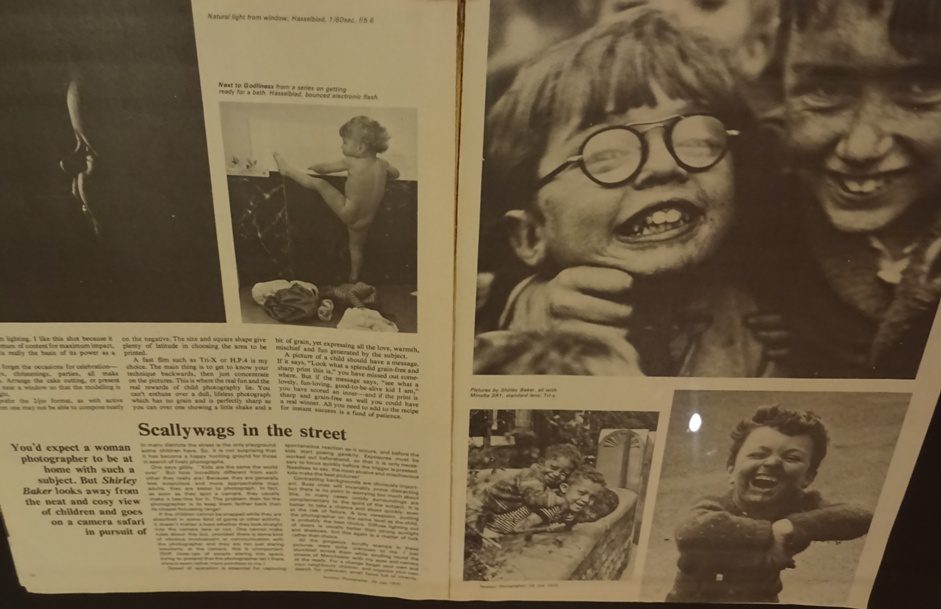 “She was morally outraged by the way people were being treated by what could be loosely called the authorities” said Anna “She felt that there was a great injustice in the way that people were being forcibly moved in what was known as ‘the clearances’. What was interesting is that the people who lived there disputed that it was a slum – these areas of Ordsall, Salford, Chorlton on Medlock, Hulme…Nobody who lived there felt that they were living in a slum. They felt they were living in working class communities that were very old and very solid, and actually had very high social values.
“She was morally outraged by the way people were being treated by what could be loosely called the authorities” said Anna “She felt that there was a great injustice in the way that people were being forcibly moved in what was known as ‘the clearances’. What was interesting is that the people who lived there disputed that it was a slum – these areas of Ordsall, Salford, Chorlton on Medlock, Hulme…Nobody who lived there felt that they were living in a slum. They felt they were living in working class communities that were very old and very solid, and actually had very high social values.
“One of the things that Shirley was concerned about was that when you were demolishing houses, you weren’t just demolishing bricks and mortar you were actually demolishing communities that were long serving, that had taken generations to build up” she explained “People had extended families living very close to them and that sense of community was very special and unlike middle class communities, which tend to be very volatile and new – and not based on familial networking but based on other values like ‘Do I like this house? Has it got a big garden?’
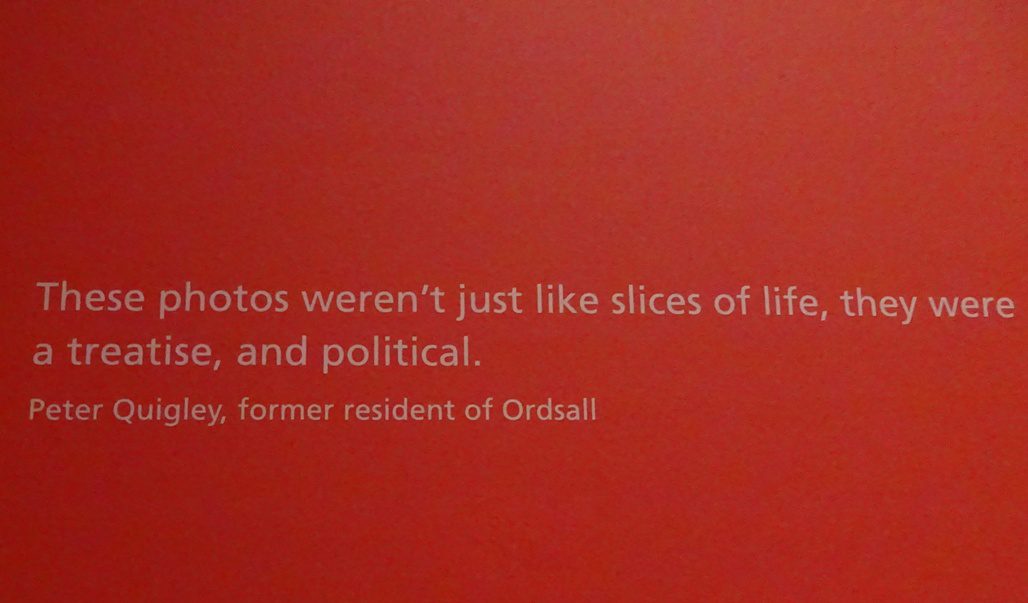 “Working class communities, she felt, had very different value systems and quite humanist values not based on consumerism; and these weren’t expressed in a heavily political sense but through her photographs” Anna added “She empathised with a very different set of social values – of community and social networks and non-materialism….she is dismayed by the way that these communities are being broken up and the way people are being treated.
“Working class communities, she felt, had very different value systems and quite humanist values not based on consumerism; and these weren’t expressed in a heavily political sense but through her photographs” Anna added “She empathised with a very different set of social values – of community and social networks and non-materialism….she is dismayed by the way that these communities are being broken up and the way people are being treated.
“I think the photographs, for a contemporary audience, strongly suggest that there are alternate values to materialism, and actually I think she focuses very heavily on photographing children because children don’t know their poverty” she explained “I’ve talked to a lot of adults who were children in these photographs and that’s what they repeatedly and consistently say – they knew they were poor but didn’t feel poor because out in the street it was a social leveller and the street was this fantastic, exciting playground.
“In many ways, as the area became more and more degraded it just became a more exciting playground for children” she said “They didn’t think they were living in a slum, and I think she recognised that; that poverty is not necessarily a barrier to creativity and inventiveness and, indeed, it might be the engine of it. These children had a strong sense of play – the children become a kind of symbol of a different way of life full of adventure, curiosity, creativity; values that are not dependent on wealth, in contrast to the middle class. These photos, she says, are stories, not truths, about these places. But the stories she is telling are about co-operation about support, collaboration and solidarity.”
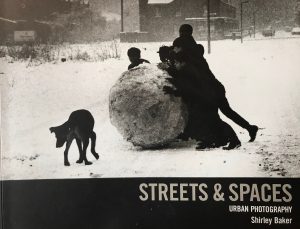 In 1963, two of these photos were exhibited as part of an exhibition, Nine Photographers at the Manchester Design Centre. Shirley Baker didn’t get exhibited again until her solo show at Salford Art Gallery in 1986, although in 1969, she won the SLR Camera magazine’s ‘Children Portfolio Competition’. In 1970 she moved to lecturing at Manchester Polytechnic, before giving teaching up a few months later. For five years, between 1986 and 1991, Shirley regularly stayed in London, where her husband had a new job, and would photograph young men and women on the streets around Camden Lock and beyond.
In 1963, two of these photos were exhibited as part of an exhibition, Nine Photographers at the Manchester Design Centre. Shirley Baker didn’t get exhibited again until her solo show at Salford Art Gallery in 1986, although in 1969, she won the SLR Camera magazine’s ‘Children Portfolio Competition’. In 1970 she moved to lecturing at Manchester Polytechnic, before giving teaching up a few months later. For five years, between 1986 and 1991, Shirley regularly stayed in London, where her husband had a new job, and would photograph young men and women on the streets around Camden Lock and beyond.
The 1986 show, Here Yesterday and Gone Today, as part of a larger Images of Salford exhibition raised Shirley’s profile higher in the North West. She also had work on show at The Cornerhouse and Bloodaxe published a book of her photos which sold over five thousand copies. In 1998, age 66, Shirley took an MA in Photographic History and Theory at the University of Derby, and in 2000 she was commissioned for the opening of The Lowry in Salford and produced Streets and Spaces: Urban Photography – Salford and Manchester, 1960s-2000, an exhibition and book in which she re-visited places she had photographed in the 1960s and 70s and compared how they looked.
In 2007, Shirley Baker’s work was included in the exhibition How We Are: Photographing Britain, at The Tate Gallery, London, while in 2011 Salford Museum and Art Gallery hosted a retrospective exhibition, and, a year later, the British Council included her images in a major exhibition in San Paolo. More exhibitions followed at The Lowry, Lakeside Arts and Oldham Art Gallery. In 2015, Women and Children; and Loitering Men opened at The Photographers Gallery, London, curated by Anna Douglas…
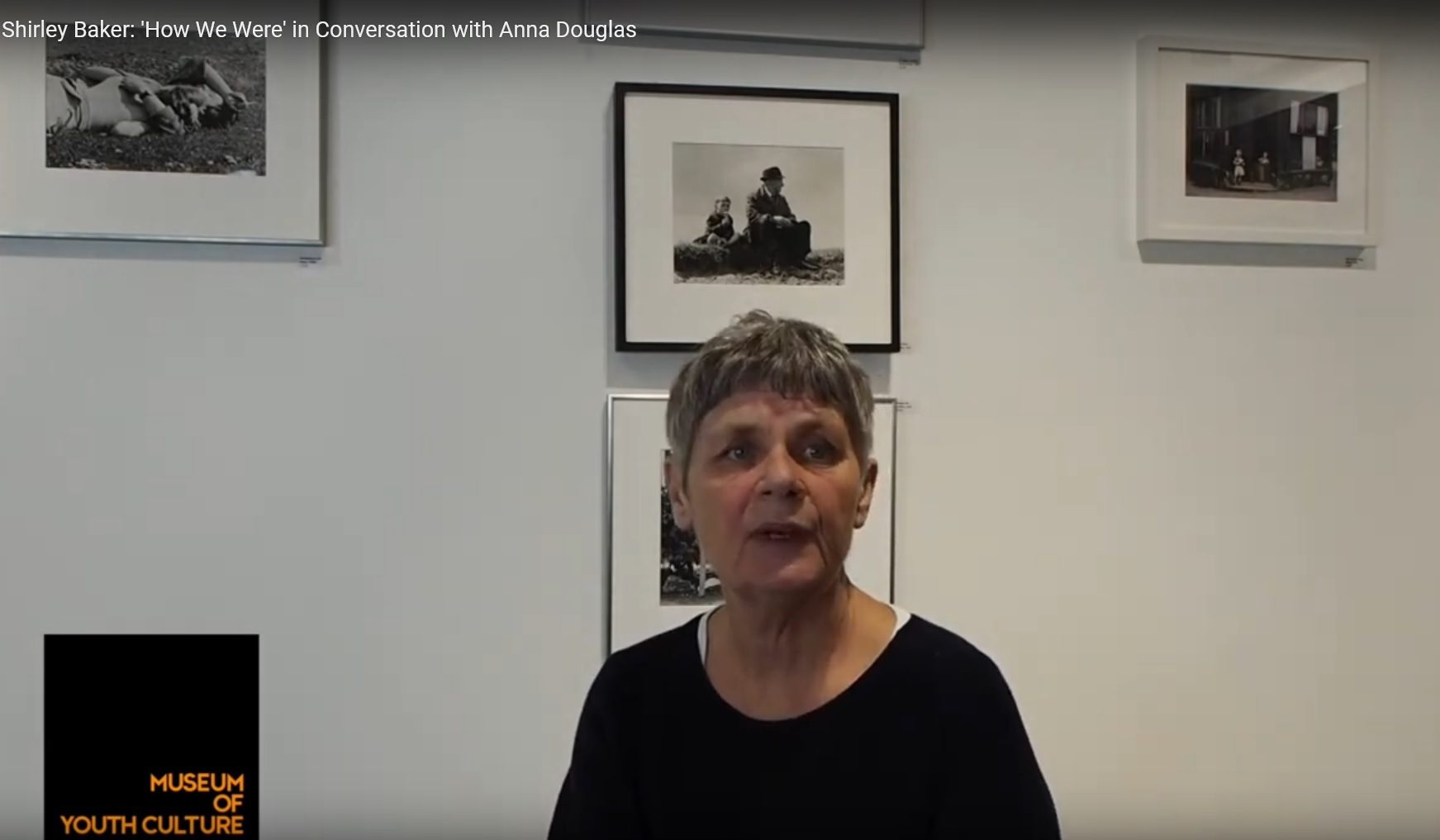
“The exhibition sought to contextualise Shirley Baker as a pioneering figure within the evolution of British photography post-war, a photographer whose work might be seen as a bridge between the reportage tradition of just after the war, and the emergent artist photographers who engaged the documentary style for reflective as well as critical purposes” wrote Anna in her Phd Curating as Critical Inquiry: Reframing Shirley Baker’s photographs and theorising their interpretation in exhibitions…
“The exhibition was an immediate success with audiences who, like Baker back in 1986, were deeply affected by the photographs” she added “…The question of ‘Who was Shirley Baker?’ and how had she ‘escaped’ previous national recognition dominated most media coverage…”
Now, dozens of exhibitions and many books and features later, the recognition is huge…
See also:
Shirley Baker – A Bury New Road Icon – click here
Shirley Baker In Her Own Words – click here
Interview With Shirley Baker’s Daughter, Nan Levy – click here
Shirley Baker In 2023 – click here
